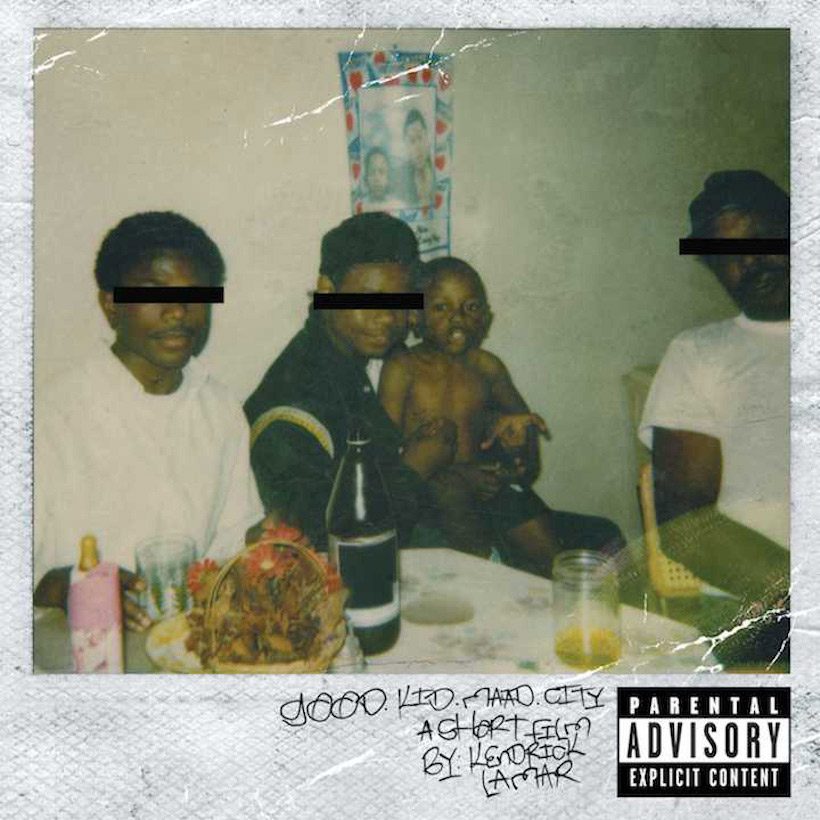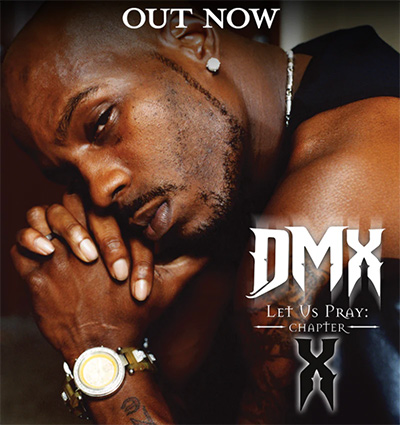Kendrick Lamar’s ‘Good Kid, mAAd City’: A Lesson In Storytelling
Kendrick Lamar unleashed ‘Good Kid, mAAd City’ in 2012. The album not only holds a place in the hip-hop canon, but it also shifted the culture.

The best concept records still have fabulous singles. There is a reason that people know “Juicy” by the Notorious BIG, “Mercy Mercy Me” by Marvin Gaye, or “Ziggy Stardust” by David Bowie despite maybe never hearing the full albums that feature them. Those singles alone are strong enough that even someone with just a casual knowledge of the albums they come from can’t deny the talent that is behind them. The same could be said for “B__ch, Don’t Kill My Vibe” or “Swimming Pools (Drank)” from Kendrick Lamar’s major-label debut, Good Kid, mAAd City.
Since K Dot released Good Kid, mAAd City on October 22, 2012, the album not only holds a place in the hip-hop canon but also shifted the culture. It’s even been incorporated into the curriculum in several universities.
Buy Kendrick Lamar’s music on vinyl now.
The Good Kid, mAAd City cover art features a childhood Polaroid of Kendrick with his uncles and grandfather. There is a baby bottle, a 40-oz bottle and one uncle is flashing a gang sign. In the background is a picture on the wall featuring Kendrick and his father. Everyone’s eyes are blacked out. Speaking on the cover art, Lamar says, “That photo says so much about my life, and about how I was raised in Compton, and the things I’ve seen, just through them innocent eyes. You don’t see nobody else’s eyes, but you see my eyes are innocent, and tryna figure out what is goin’ on.”
A gripping narrative
The title on the cover also reads: “a short film by Kendrick Lamar.” This is not an accident. Good Kid, mAAd City is cinematic and tells a gripping specific narrative. It’s a day in the life of the protagonist, K Dot, as he becomes Kendrick Lamar and in it, hooks up with his girl, robs a house, and goes through misadventures, which makes him question hood politics.
The first track, “Sherane aka Master Splinter’s Daughter” isn’t really the beginning of the story but rather sets the stage. Picture the beginning of Reservoir Dogs and the now infamous Madonna and “No Tipping” monologues. They don’t necessarily push the story forward but they create the world that you’re about to step into. In this song, you step into the mindset of Lamar’s persona, K Dot, who’s the protagonist of the story. K-Dot, is meeting with a girl named “Sherane” and much like in a Tarantino film, the story doesn’t exactly follow one thread. It’s filled with fits and starts, twists and turns.
The skits following the songs are concise but actually feature Kendrick’s friends and mother and father. They’re what pull the story completely together. The skit after “Sherane a.k.a Master Splinter’s Daughter” has Kendrick’s mother and father wanting him to bring her van back to the house. A picture of this van is also featured on the deluxe version of the record.
The state of hip-hop
The single “B__ch, Don’t Kill My Vibe” also serves as sort of an introduction and is more about the state of hip-hop. The original version features guest vocals by Lady Gaga and was titled “Partynauseous.” However, timing issues came up and ultimately her version didn’t end up on the album. She later released it herself, to Lamar’s surprise. The skit that ends “B__ch, Don’t Kill My Vibe” once again pushes the story along. In it we hear K Dot’s friends telling him to meet them in the car where they have a beat CD.
“Backseat Freestyle” and “The Art of Peer Pressure” naturally flow together. The former tells a story about K Dot freestyling with his friends in the car dreaming like “Martin had a Dream/Kendrick have a dream” and that they will make their mark. The song captures a vivid amount among close friends and the simple joys of hotboxing a car and freestyling with friends, then it sets the stage for “The Art of Peer Pressure,” which is a major development in this narrative.
A seemingly innocent caravan with friends ends up being a night of smoking and drinking and robbing someone. There’s less bravado with this but more of an internal conflict. Despite the situation, you’re still rooting for K Dot and relieved when he eludes the cops. He’s then faced with a dilemma, does he follow the path of his peers, or keep his head down and make that money, which leads to “Money Trees.”
“Poetic Justice” brings us back to the beginning of the story with Sherane. A group of men jump K Dot just because he’s from a different hood. He realizes even after robbing a house that the predator can just as easily become the prey.
The eternal struggle of the hood
“Good Kid” and “mAAd City” are linked as well. “Good Kid” is about the eternal struggle of the hood. How can someone survive in a world where the question is whether you wear red or blue and where you are from? This song is another turning point in the narrative. K Dot wonders if he can make it out alive. Engineer MixedByAli explained further in an interview in Complex how “being a good kid is being stuck inside of the box and how [he] has no choice but to ride along on the drive-by shooting, have no choice but to go into the houses and rob, because this is what he’s around.” He’s just going with his people.
He’s once again faced with the double-edged sword of gang life on “mAAd City.” If he doesn’t follow the way of the gang, he has no protection. However, if he aligns himself with a gang, it makes him more of a mark for violence. The song is split into two parts: starting with a slow intro before building up to a hard club beat. Legendary West Coast MC Eiht makes a guest appearance on this track in what is yet another moment where Kendrick gives a salute to the Compton hip-hop sound that came before him.
To the casual listener, “Swimming Pool (Drank)” sounds like a party jam, but if you listen closely it’s more of a cautionary tale. At this point in the story, Kendrick’s friends decide to seek revenge against the people who stomped Kendrick earlier, resulting in the death of his friend’s brother, Dave.
Questioning his life as K Dot
“Sing About Me” has Kendrick thinking about tragedies that have impacted his life. The first the aforementioned Dave, the second a sister of a sex worker who was the subject of a song in Kendrick’s debut release. Finally, we hear “Kendrick” for the first time questioning his life as K Dot. The song represents being baptized and finding oneself.
By the end of Good Kid, mAAd City, you’ve come to understand that K Dot’s previous view that “money, power, respect” being the end all be all is dangerous code to live by. And that “Real” is a reflection of what could have been. “That’s the start of me recognizing everything I was doing throughout that day, it wasn’t real,” Lamar said. “Everybody has their own perception of what a ‘real ni__a’ is. Most of the time a real ni__a is a street cat or someone putting in some type of work and doing violence. That’s what we thought they was. But on that record, it was me getting an understanding of what real is.”
The ending track “Compton” could have appeared early in the story, though some liken it to what plays during the credits of this narrative album. It can also signify the cycle starting over or a wink at what new chapters bring.












